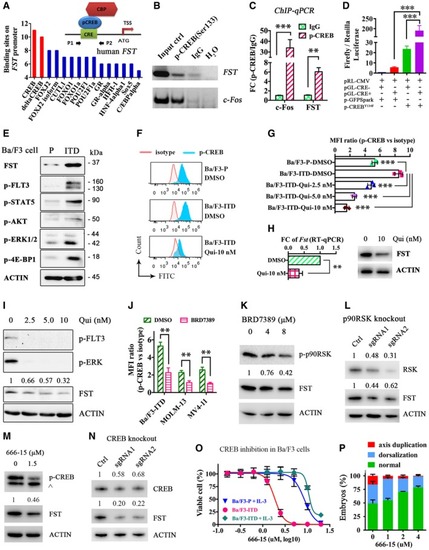Figure 3
- ID
- ZDB-FIG-200410-10
- Publication
- He et al., 2020 - Follistatin is a novel therapeutic target and biomarker in FLT3/ITD acute myeloid leukemia
- Other Figures
- All Figure Page
- Back to All Figure Page
|
The direct binding of p‐CREB to human Dual‐luciferase assay demonstrating the direct binding of p‐CREB on human FST promoter. pRL‐CMV, Renilla luciferase vector; pGL‐CRE− and pGL‐CRE+, firefly luciferase expression driven by human FST expression and Phospho‐flow analysis of p‐CREB in Ba/F3‐parental, Ba/F3‐ The expression of FST and phosphorylation of CREB were detected by Western blotting (I and K) and phospho‐flow analysis (J) in MOLM‐13 (I) and Ba/F3‐ RSK expression and FST expression were detected by Western blotting after p90RSK knockout by CRISPR/Cas9 in MOLM‐13 cells. The phosphorylation of CREB and FST expression was detected by Western blotting in Ba/F3‐ CREB expression and FST expression were detected by Western blotting after CREB knockout by CRISPR/Cas9 in MOLM‐13 cells. The growth of Ba/F3‐parental (with IL‐3), Ba/F3‐ The rescue effect of CREB inhibitor 666‐15 on |
| Fish: | |
|---|---|
| Condition: | |
| Observed In: | |
| Stage: | Prim-5 |

